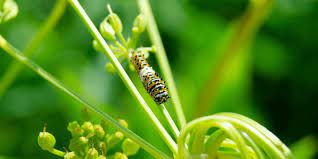Flowering plants, including trees, flowers, vegetables, native plant gardens, or cash crops, depend on pollinators like butterflies, bees, and birds to grow. Pollination can occur by wind, water, and other means, but insect pollination is the most common and effective. If you have flowering plants that need pollinators, consider including a host plant to attract insects and birds. Growing gardens or flowering plants take two primary things: a host plant and a butterfly:
What is a Host Plant?
Host plants are precisely what the name suggests: plants that host pollinators. You can grow specific flowering plants that are known to support birds, butterflies, and other insect pollinators. Native plant gardens offer a great start. The native flowers and plants support the local biodiversity that has depended on such options for ages. Host plants release sweet-smelling nectar that attracts butterflies and other insects.
You need a host plant in your garden to attract natural pollinators. Birds, bats, butterflies, bees, and other insects fly from plant to plant, spreading pollen on each place they land. This fertilizes the plant, increasing its production. Having a host plant boosts the number of pollinators on your farm without attracting negative pests. Working with native species allows you to attract specific pollinators like butterflies or bees. These pollinators don’t spoil your crops.
Popular native host plants in the USA include Aster, Agastache, Blue Sage, Cardinal Flower, and Butterfly Weed. Others include Blazing Star, Coneflower, Evening Primrose, Garden Phlox, Wild Hydrangea, Viburnum, Serviceberry, Summersweet, and Sweetspire. Each region has unique species native to the land that will best thrive.
Why You Need Butterflies Pollinators
Up to 70% of crops and 1/3 of all agricultural production depend on pollination. Animals like birds, bats, and insects like butterflies and bees trap pollens and carry them to the stigma, ovule, or flower. Here’s why you need butterflies as your primary pollinator:
- a) Efficient Pollinators – Butterflies move from flower to flower and naturally trap pollen grains. Having butterflies on your farm can result in fast pollination across the garden.
- b) Easy to Attract – Flowers with nectar are all you need to attract butterflies. Bright colors and natural scents can also keep plenty of butterflies flying around your garden.
- c) Protect Your Plants – Unlike destructive pests that’ll eat up your harvest, butterflies are on a liquid diet. This will protect your plants from being nibbled on or damaged.
How to Attract Butterflies & Other Pollinators
Planning to grow flowering plants, gardens, food crops, or cash crops? Consider how you may attract pollinators to your plot. Butterflies require very little to be attracted to a garden. Here are some ways to attract butterflies for pollination:
1. Add A Native Host Plant
Host plants are any flowers or trees that attract butterflies because of their nectar, fragrance, or broad, colorful petals. A native plant has been growing in the land for centuries. Local butterflies know the native host plants and love spending time around them. You can visit native plant gardens to find the best species for attracting butterfly pollinators.
2. Use Colors & Shapes
Bright blue and violet colors can attract bees. Plants with such colors include Agastache, Blue Sage, and Asters. Butterflies follow yellow, orange, pink, and red flowers, while birds prefer warm red and pink colors. Hummingbirds prefer tubular flowers where they can dip their tongues for nectar. Butterflies prefer flat landing petals like in the Blazing Star and Viburnum.
3. Use Fragrance & Nectar
Moths, bats, and other night pollinators are drawn to fragrances and nectar. You should add plants with scents and pale-colored petals that tend to glow in the moonlight. Popular examples include the Evening Primrose, Wild Hydrangea, Sweetspire, Summersweet, and Garden Phlox. Fragrant plants attract and support day and night pollinators with their nectar.
Growing Native Plant Gardens
Never underestimate the benefit of a host plant on your farm. The best way to support the essential pollination process is to add attractive flowers and plants that butterflies and bees love.
Native plant gardens are easy to include in any space, as they can be planted in any size, from large fields of crops to small gardens. Find a reputable native tree nursery that can guarantee healthy native plants and flowers for your garden. Native plant species are also good for the environment, and boost biodiversity.









